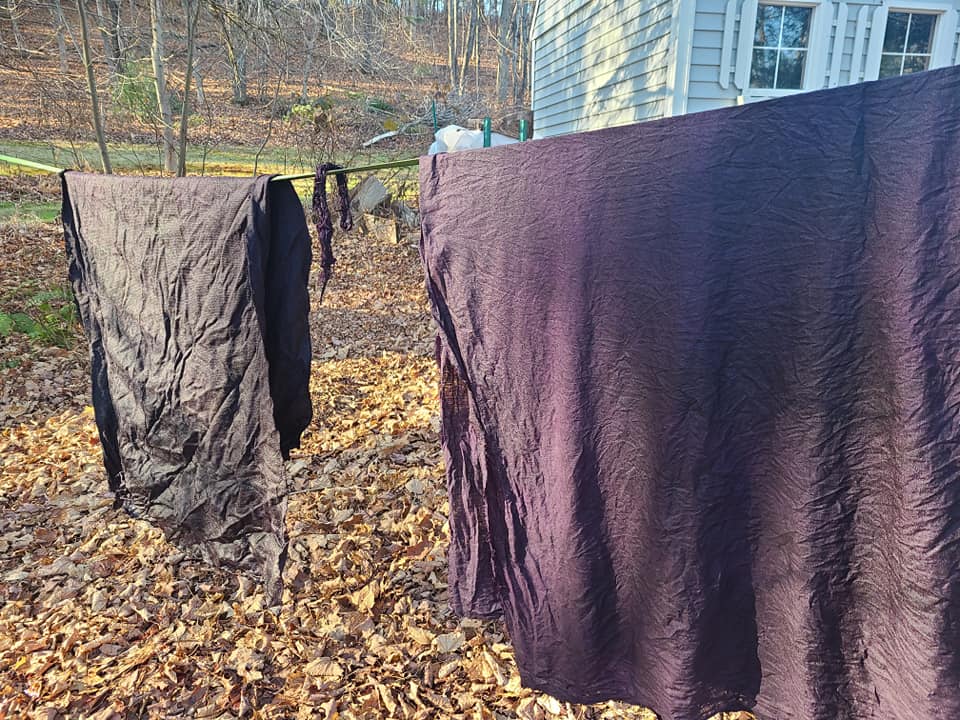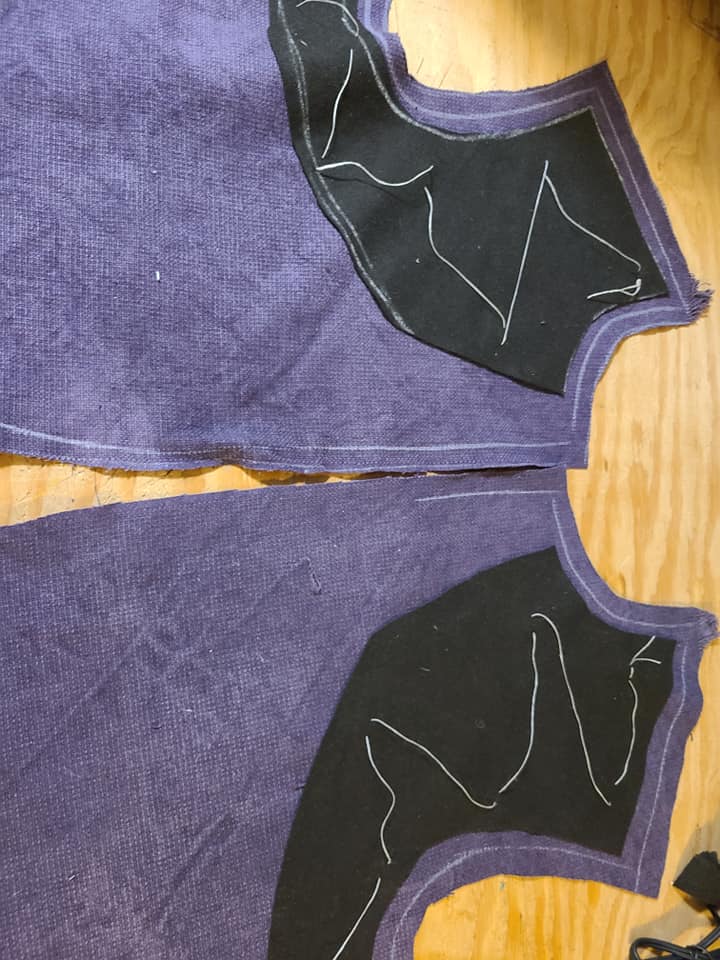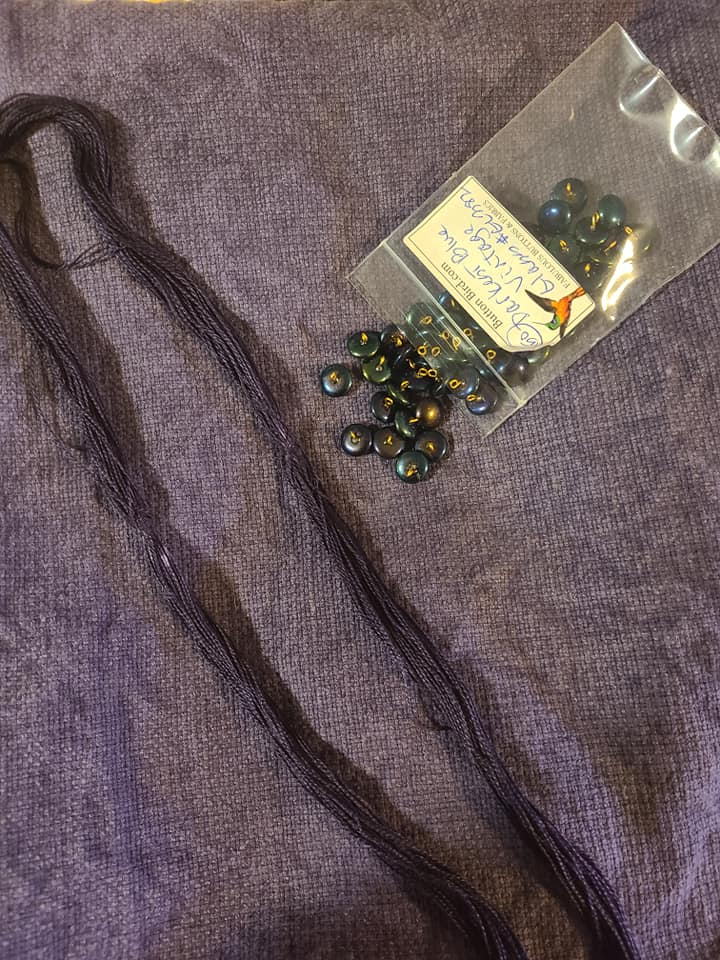The hard true of the matter is that for most of us our family trees are not full of Lords and Duchesses. The majority of our ancestors were common people who made it by with hard work and whatever materials they could afford. I love the study of common peoples clothing, I love to see and read about the clothes that the everyday people wore. Its great fun to make the truly ludicrous clothing of the court out of fine silks and velvets, but I personally would rather make clothes of russet, fustian, and canvas. I am also an artist, I love color. I love all the shades of colors achieved by the natural dyes and materials of the past. I also love the social and economic context that these colors played in the clothing of the past.
Towards the end of last year I began to play with natural dye stuffs. I began by collecting readily available species like walnut and buckthorn. Then I ordered things like madder root, weld, indigo, and logwood. I work with trees and woody ornamentals for a profession, so getting to match up my work life with my hobbies was a new and exciting thing. When the Ethereal challange was anounced I decided that I wanted to dye some of the materials I would use. I had also recently read a journal article by the Tudor Tailors about violet color clothing showing up in wills and probate accounts in Essex. Violet was probably mostly achived by mixing madder and woad, but I fell down a rabbithole about illicit dyes so it was time to play with logwood….

Logwood (Haematoxylum campechianum) is a tree species native to Central America. It was first imported to Europe by the Spanish in the 16th century. Colors which can be achived with logwood dyes range from blues, murray (red/purple), purples, and with the addition of iron, black. In 1581 logwood dye was banned in England on the grounds that it was a weak and inferior dye. This stemmed from it fading much faster than other dyes. The ban was not repealed in England till 1665. I personally feel that the ban placed on logwood has more to do with it being a Spanish monopoly product, and at the time England and Spain were ramping up to open war (the Spanish Armada campaign is 7 years later in 1588). But much like the black market products of today, it was still being used in England with some frequency.
I have come across accounts of the illegal sale and use of logwood dye being referenced in the Journals of the House of Commons in England. The ban was often brought up and reaffirmed numerous times after its initial proclamation. And there is one wonderful description of logwood dyes from a 1607 meeting of the Commons; “who buy deceitful Dyes for sure Colours, and the great Aspersion of our Religion, and Scandal of our Nation,”. The lumping in of religion as well as economics is rather telling when thinking about it being imported from staunchly Catholic Spanish colonies.
I found this issue of illegal use of a banned dye and its social and economic status fascinating. The idea of a dodgy dye worked wonderfully with the social status of the outfit I planned to make. The outfit I planned was that of a man on the make. someone who wanted to display their new found wealth and social standing, but didn’t quite have the money yet to afford really expensive silks and finery. It worked well with the fustian fabric I planned to use for the doublet.
For the doublet I dyed 2 weights of linen fabric (one canvas, one lightweight) to act as interling and will be visible through the slashing on the doublet. I also dyed 20/2 silk thread, and 20/2 linen thread (silk for the buttonholes, and linen for construction sewing). All of the fabric and thread was first soaked in a alum (salt) mordant to help the dye adhere and fix to the fibers. The dye (ground up logwood) was added to a pot of boiling water then left to simmer. The fabrics and thread were then put into the dye pot and left to simmer for several hours. While the threads took the dye farely well, the linen fabric required several trips through the dye pot. after drying the fibers were rinsed and then dried.




Awesome.
I really enjoy reading your blog. I dug Arnold out to compare your patterning photos to the German Venetians. You achieved a nice drape.
Wool Weights: I have had great luck washing heat pressed suiting and getting back denser, soft, better-fulled, flexible wool. Do you wash your wools? If we were meeting in person at this time of year I would certainly be wearing my beloved houndstooth tweed cashmere/ wool blend surcoat to travel to the event. It was suiting weight and became “Light Blanket” weight with 2 washes. I wish you could feel it.
Your hand sewing is very fine. The best thing I ever learned as a costumer was that if it was not Long and Straight and Hidden just sew it by hand. Everyone will be happier in the long run.
Logwood? Anything the government troubles itself to Ban is being Done! And a related note on Pockets: a court case cited by Arnold in Patterns of Fashion for “Over stuffing his breeches above his Station” caused me to make pockets for Paned Trunk Hose that ran from the Center Front to Center Back. They served as extra inflation of the hose and allowed my husband to have his Stuff without resorting to bags and purses.
I do miss being present and able to chat with contestants. Your notes make up for that. Thank you!
May I hire you as my personal color consultant? I loved the color you achieved. I never knew that logwood had been banned in England – that’s absolutely fascinating.
Colors are soooooo fascinating! Other than reading about sumptuary laws I’d never really thought about how the dyes were regulated. It has really opened up a whole new area of niffty research for me.
Also purple is one of my favorite colors so being able to dye it and document it is awesome!